Exporting Spices from India | Top Strategies
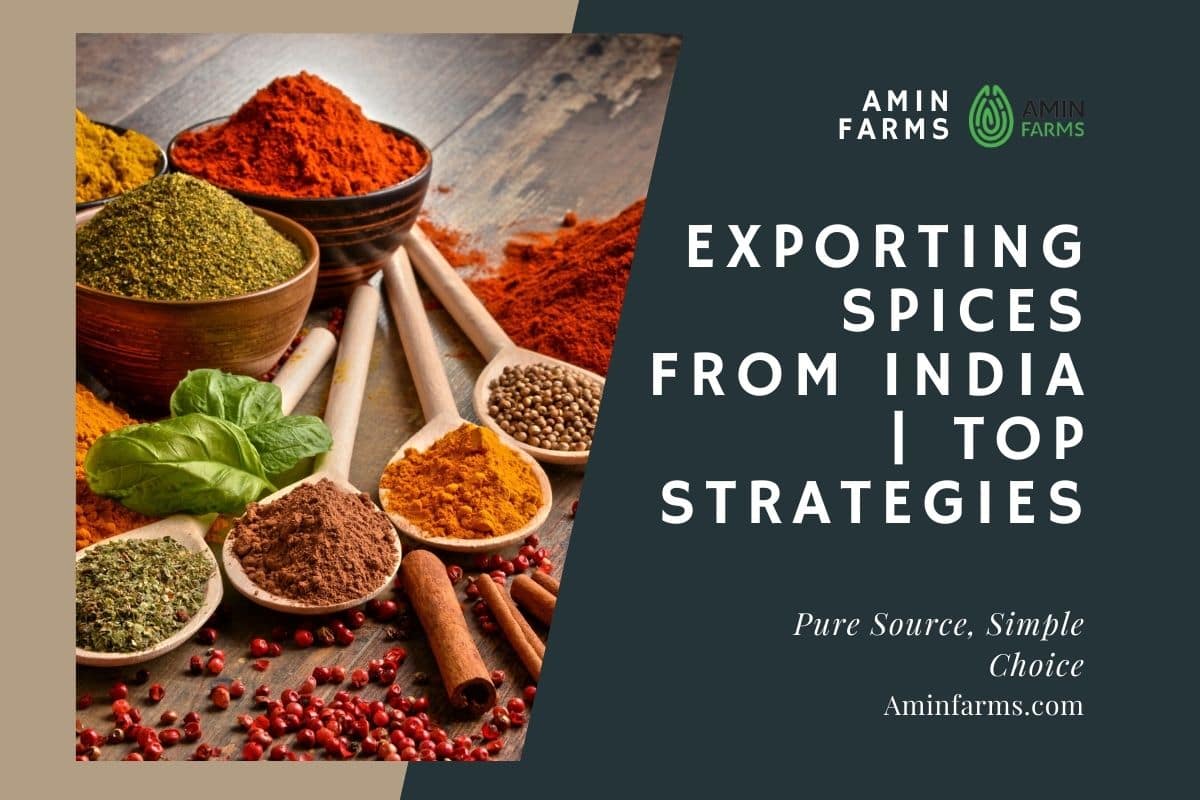
India, often referred to as the land of spices, has a rich history and deep cultural roots in producing and trading these aromatic treasures. From the bold black pepper of Malabar to the golden power of turmeric and the fragrant green cardamom, Indian spices have shaped kitchens around the world while also playing a key role in the country’s economy.
Neighboring regions such as Iran, with their own strong culinary traditions and strategic trade routes, have long been connected to this story, highlighting India’s central role in the global spice network. However, the global market is constantly evolving, and success now depends on more than tradition alone. Exporters need fresh strategies to stay ahead.
With rising competition, shifting consumer preferences, and rapid technological advancements, relying on outdated methods is no longer sufficient. Businesses involved in exporting spices from India must embrace smarter, more innovative approaches to grow and compete internationally. The year 2025 presents both challenges and opportunities, and those who adapt will be the leaders of the future.
This article explores the most effective strategies for the future of the spice trade. Whether you are a new entrepreneur or an established exporter, understanding the modern spice export process from India is crucial for success. If you want to discover the top insights for exporting spices from India in 2025, stay with us until the end. You’ll walk away with practical ideas you can put into action.
Step-by-Step Guide to Exporting Spices from India
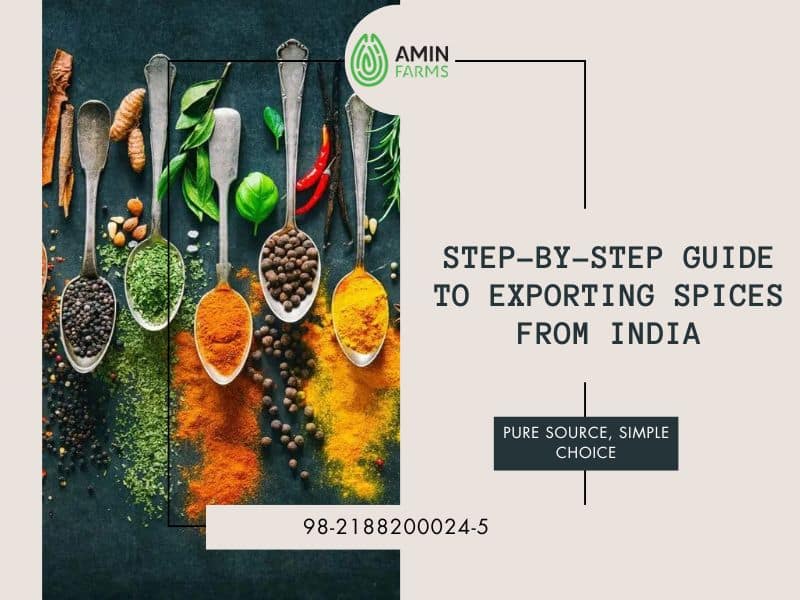
Starting your journey in exporting spices from India may feel overwhelming at first, but with the right plan and clear steps, the process becomes much easier to manage. From researching markets and selecting the right spices to securing licenses and finding buyers, every stage requires careful attention and strategic planning. Here’s a simple guide to help you confidently step into the profitable world of spice exports.
1. Market Research and Choosing the Right Spice
Before you start, research your target markets carefully. Use online reports to spot regions with high demand, such as Europe, the US, or the Middle East. Pay attention to consumer trends, like organic or blended spices. Select a spice where you hold an advantage, such as Kerala’s pepper or Karnataka’s cardamom. These are among the top spices exported from India.
2. Registering Your Business and Licenses
To trade officially, you must register your company as an exporter with the relevant authorities. The Importer-Exporter Code (IEC) is essential for all international shipments. You may also need certificates, such as FSSAI or ISO, to meet global standards.
3. Reliable Supply and Quality Packaging
Partner with trusted farmers or suppliers to guarantee consistent quality. Packaging matters too; it should protect the product, display certifications, and appeal to buyers. Eco-friendly designs attract modern consumers.
4. Marketing and Finding Buyers
Showcase your products on B2B platforms, attend international trade fairs, or build a professional website. Exhibitions like Anuga in Germany or international food expos in Iran can be excellent places to connect with serious global buyers.
5. Logistics and Documentation
Work with a reputable freight company to handle your shipping needs. Ensure that documents such as invoices, certificates of origin, and packing lists are complete. Proper paperwork is vital for exporting spices from India smoothly.
Essential Certifications and Compliance
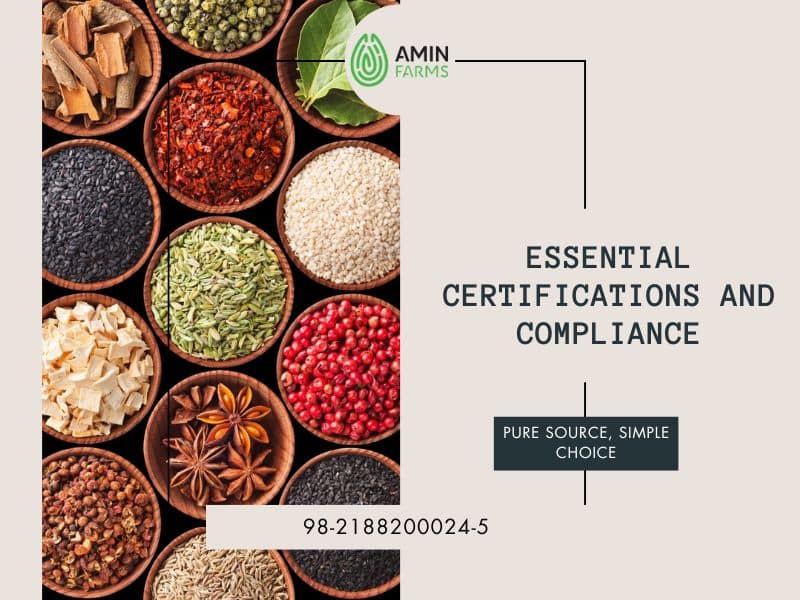
When it comes to exporting spices from India, delivering excellent quality is only part of the story. To succeed in today’s global market, exporters must also comply with international regulations and obtain recognized certifications. These documents not only build trust with overseas buyers but also ensure smooth customs clearance and access to high-value markets, such as the EU and the US.
1. Food Safety Certifications
Every exporter should begin with food safety approvals. In India, FSSAI certification is mandatory. Beyond that, international standards such as ISO 22000 and HACCP demonstrate that your production processes meet stringent health and safety requirements, thereby reducing risks for both consumers and importers.
2. Organic and Specialty Certifications
With growing demand for clean and sustainable food, organic labels have become essential. USDA Organic for the US and EU Organic for Europe help position your products in premium markets. Specialty certifications, such as Halal and Kosher, also expand opportunities, catering to the cultural and religious needs of consumers. These are some of the most important certifications for Indian spice export.
3. Packaging, Labeling, and Eco-Responsibility
Each country has its own regulations regarding packaging and labeling. Clear information on ingredients, nutrition facts, expiration dates, and recycling symbols is often required. Today’s buyers also value eco-friendly packaging that minimizes waste and supports sustainability, which can boost your brand image.
4. Social and Environmental Certifications
Modern consumers are increasingly paying attention to ethical and environmentally friendly practices. Certifications, such as Fair Trade, ensure that farmers are paid fairly, while sustainability-focused labels highlight responsible farming practices and reduced environmental impact. Adding these credentials sets you apart from competitors.
5. Customs Documentation
Finally, don’t overlook shipping documents: invoices, packing lists, certificates of origin, and bills of lading. Any errors here can cause delays, so working with experienced freight forwarders is strongly recommended.
Top Spices Driving India’s Export Boom
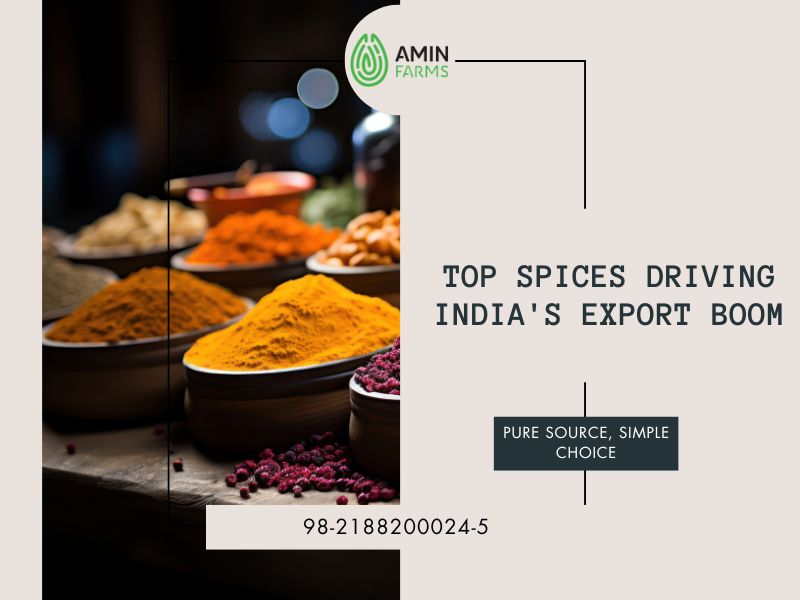
India’s unique climate and geography make it one of the world’s richest sources of spices. While the country produces thousands of varieties, a select group of spices stands out for their exceptional quality, high production volume, and strong global demand. Knowing these key products helps exporters focus on the most profitable opportunities and shape more innovative marketing strategies.
- Black Pepper: Kerala’s black pepper is bold, aromatic, and used in kitchens and medicines worldwide, making it one of India’s most iconic exports.
- Cardamom: Green cardamom from Karnataka and Kerala is prized for its strong aroma and high oil content, and is used in various applications, including food, beverages, and perfumes.
- Turmeric: Known for its golden color and curcumin content, Indian turmeric is a star in food, beauty, and pharmaceutical industries.
- Ginger: Dry ginger from India is prized for its sharp flavor and health benefits, and is widely used in food and drinks.
- Cumin: India is the largest producer of cumin, and its strong aroma makes it a staple in international cooking.
- Coriander: Coriander seeds from India are in high demand for use in spice mixes, pickles, and various global cuisines.
- Curry Powder: A blend of spices like turmeric, cumin, and coriander, curry powder offers convenience and rich flavor, especially popular in Western markets.
- Chili Powder: From fiery to mild, Indian chili powders, such as Kashmiri chili, are prized for their color and flavor.
Exporting Spices from Turmeric to Cumin
Turmeric and cumin are two of the most essential spices in world cuisine and among the most critical exports from India. Turmeric is renowned for its vibrant golden color and potent health benefits, mainly due to its active compound, curcumin. It is widely used not only in cooking but also in medicine and cosmetics.
India is the largest producer and exporter of turmeric worldwide, and premium varieties such as Lakadong turmeric are especially popular for their purity and high curcumin content.
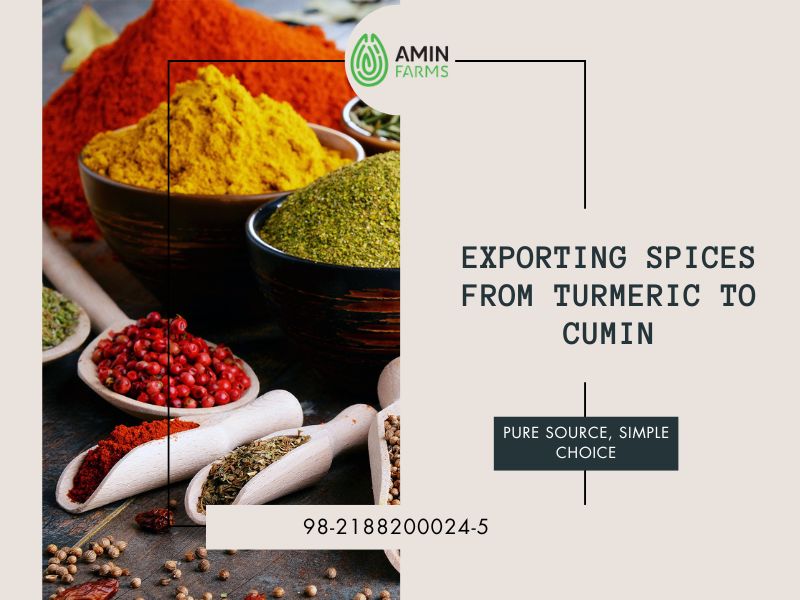
Cumin, on the other hand, holds a unique place in countless recipes, from curries to breads. Known for its strong aroma and warm flavor, it is a staple ingredient across many food cultures. India dominates global cumin production and export, making it one of the country’s most profitable spices.
Both turmeric and cumin play a vital role in boosting India’s demand for exporting spices. Their versatility extends beyond kitchens, with widespread applications in the pharmaceutical and wellness industries. This dual appeal makes them highly valuable in international trade.
As demand continues to grow, the strength of the global Indian spice market ensures that these two spices will remain at the core of India’s thriving spice export industry.
Key Global Markets for Indian Spices
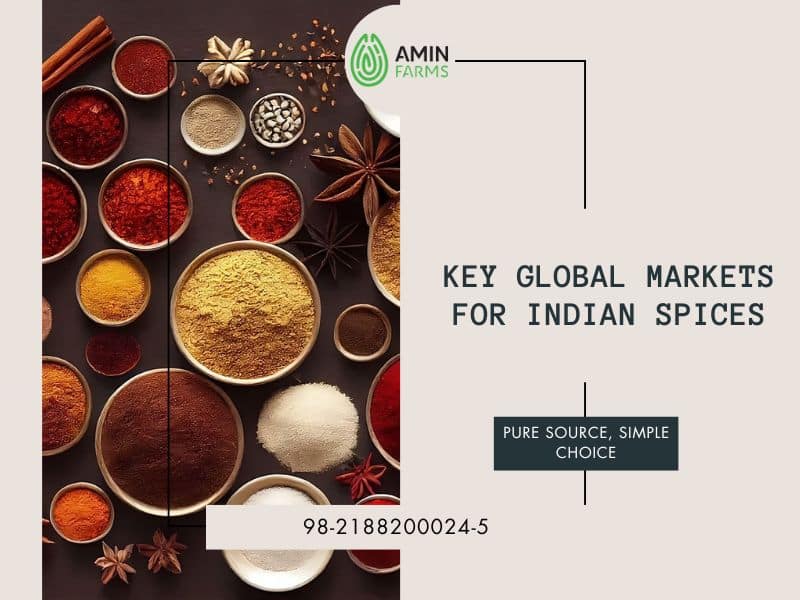
Successful spice exports from India depend on a deep understanding of global markets. Each region has its own preferences, quality standards, and consumer needs. A savvy exporter knows which spices are in highest demand in each market and how to comply with local regulations. Let’s take a closer look at some of the key international markets for Indian spices and what makes them unique.
1. United States and Canada
North America is one of the most prominent and most promising regions for Indian spices. Growing immigrant communities, rising interest in international cuisines, and the popularity of natural health products fuel demand here. Turmeric, ginger, and black pepper are especially valued for their wellness benefits. However, entering this market requires strict adherence to FDA standards and precise labeling regulations.
2. European Union
The EU is a high-value, yet highly regulated, market. European countries demand premium quality and prioritize food safety. Spices such as cardamom, black pepper, and cumin are particularly popular. Success here depends on obtaining international quality certifications and following EU rules on pesticide residues and traceability.
3. Middle East and North Africa
With a rich food culture and a long tradition of spice use, these markets remain highly profitable. Cumin, coriander, and chili are widely used, and Halal certification is essential for market entry. There’s also strong demand for blended spice powders such as curry mixes.
4. Iran
Strategically located between Asia, the Middle East, and Europe, Iran plays a unique role in the spice trade. Its domestic market shows steady demand for cumin, saffron, turmeric, and dried herbs, while its position as a regional trade hub makes it a valuable gateway to neighboring markets. Exporters who work with experienced partners in Iran can benefit from both local consumption and re-export opportunities.
5. China and East Asia
Countries such as China, Japan, and South Korea represent significant growth opportunities. Traditional medicine, wellness trends, and the rising popularity of Indian cuisine drive demand. Ginger, turmeric, and pepper are the top choices in this region.
6. African Markets
Rapid population growth and economic expansion make Africa a fast-emerging destination for Indian spices. Turmeric, ginger, and chili are in high demand, while diverse food cultures are opening the door for blended spice products.
7. Australia
Thanks to its multicultural population, Australia is a welcoming market for Indian spices. There is a strong interest in high-quality, organic products, making the export of organic spices from India a key opportunity. Compliance with health and organic certifications is critical for long-term success.
Successful spice exports from India depend on a deep understanding of global markets. Each region has its own preferences, quality standards, and consumer needs. A savvy exporter knows which spices are in highest demand in each market and how to comply with local regulations. Let’s take a closer look at some of the key international markets for Indian spices and what makes them unique.
Overcoming Challenges in Spice Exports
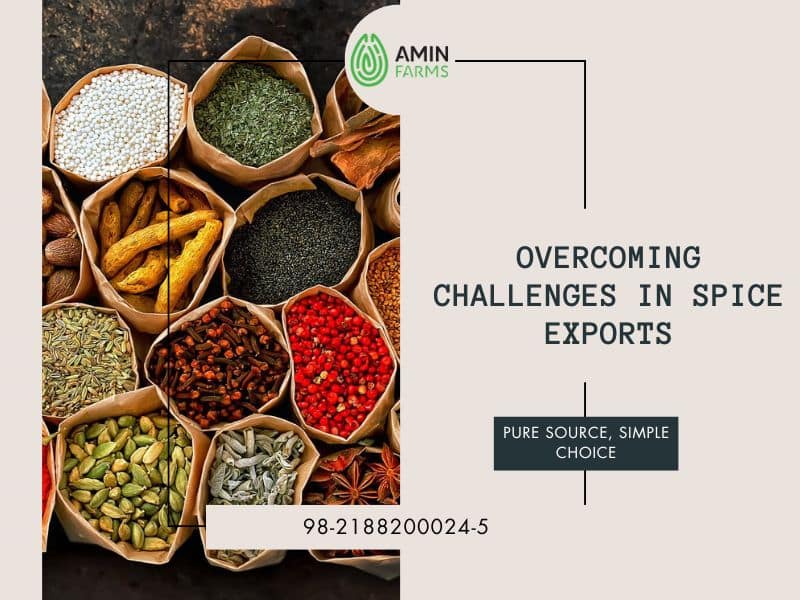
Exporting spices from India offers tremendous opportunities, but it comes with its own set of challenges. Successful exporters must understand these obstacles and adopt innovative strategies to overcome them.
1. Price Fluctuations
Spice prices can be unpredictable, influenced by weather conditions, seasonal production, and global demand. To manage this risk, consider entering into long-term contracts with buyers and utilizing financial tools such as hedging.
2. Strict Regulations and Standards
Each importing country enforces specific quality, safety, and labeling standards. Failing to meet these requirements can lead to rejected shipments and financial losses. The solution is to familiarize yourself with local regulations and secure all necessary certifications in advance.
3. Intense Competition
The global spice market is highly competitive, particularly from countries such as Vietnam and China. Standing out requires focusing on quality, innovative packaging, and high-value products such as organic spices or specialty blends.
4. Logistics and Transportation Issues
Delays, high costs, and damaged shipments can harm your reputation. Partnering with experienced logistics providers in the food sector helps reduce these risks.
5. Financial Constraints and Credit Risks
Limited capital and the risk of non-payment by foreign buyers can be significant hurdles. Instruments like Letters of Credit and export insurance can provide protection.
6. Changing Consumer Preferences
Modern buyers prefer healthy, organic, and sustainable products. Meeting these demands by supplying high-quality, eco-friendly packaged spices is essential. Understanding these factors is key to mastering the spice export process from India.
Strategies for Successful Spice Exporting
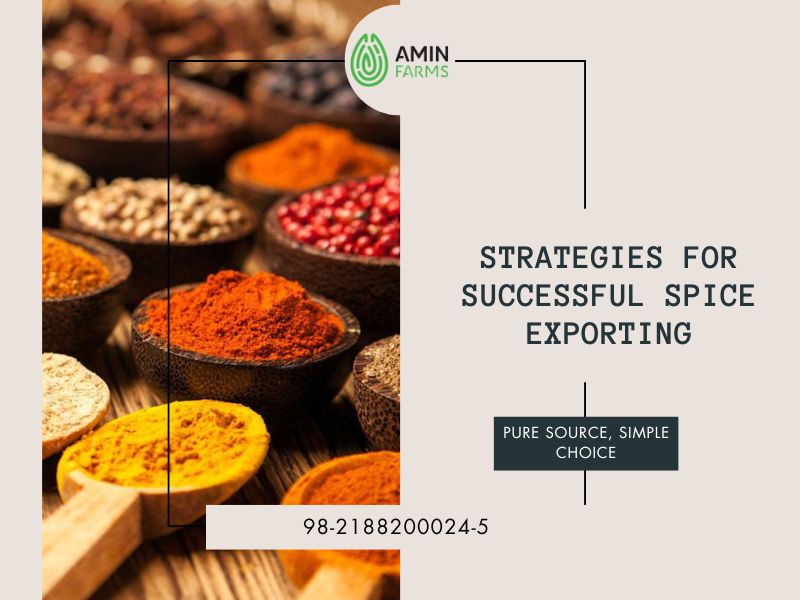
Success in the competitive world of spice exports goes beyond following step-by-step procedures. To thrive, exporters require effective strategies that enable them to stay ahead of competitors, access new markets, and achieve sustainable long-term growth. Let’s explore the top methods for successful spice export in 2025, which range from leveraging modern technology to building strong customer relationships.
1. Focus on High-Value Products
Instead of concentrating solely on raw spices, consider producing and exporting value-added products. Organic herbs, ready-to-use spice blends, essential oils, and spice extracts can increase your profit margins and differentiate your brand in the market.
2. Embrace Modern Technology in Supply Chains
Advanced technologies, such as blockchain, can track products from farm to shelf, ensuring transparency and giving customers confidence in the quality and safety of their purchases. Online inventory and logistics management systems also enhance the efficiency of exporting spices from India.
3. Strong Branding and Digital Marketing
A professional brand builds trust and helps penetrate new markets. Through content marketing, active social media presence, and a polished website, you can share your brand story and connect with customers globally.
4. Invest in Sustainability and Ethics
Global consumers increasingly value sustainability and social responsibility. Certifications like Fair Trade demonstrate commitment to farmers’ welfare and environmental protection, making your brand more appealing in the global Indian spice markets.
5. Diversify Export Markets
Avoid relying on one or two regions. Expanding into emerging markets in Africa or East Asia, alongside traditional markets such as Europe and the US, reduces risk from economic fluctuations and regulatory changes.
6. Build Long-Term Customer Relationships
Deliver excellent service, provide quick responses, and maintain consistent product quality to foster loyal customers who support sustainable business growth.
7. Comply with International Standards
Meeting ISO, HACCP, and relevant health certifications ensures smooth entry into strict markets and strengthens credibility.
Leverage Amin Farms for Your Indian Spice Exports
In the highly competitive world of spice exports, selecting a dependable and efficient partner can define your success. Amin Farms stands out as a trusted player in the supply chain, offering end-to-end solutions that simplify the entire process of exporting spices from India.
From sourcing premium, organic spices to ensuring consistent packaging standards and managing global logistics, Amin Farms covers every critical step. Their deep experience, strong presence in Iran, and broad international network guarantee that your products maintain freshness, quality, and reliability throughout their journey.
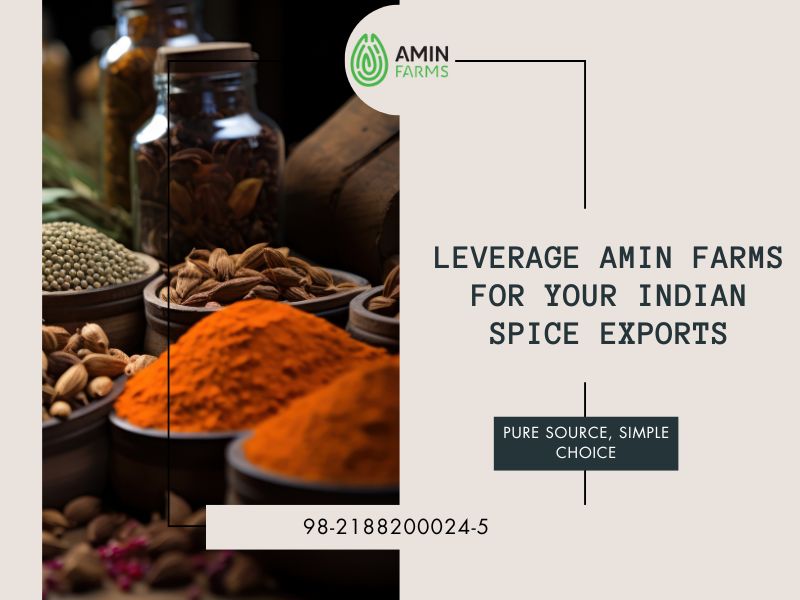
By working with Amin Farms, you minimize risks and cut operational costs, while gaining the freedom to focus on expanding your footprint in international markets. With Iran’s strategic position as a global trade hub and Amin Farms’ proven expertise, you can confidently navigate complex trade channels and establish yourself as a successful exporter in 2025.
This partnership is more than logistics; it is about building long-term growth, trust, and sustainable success in the ever-evolving spice industry.
